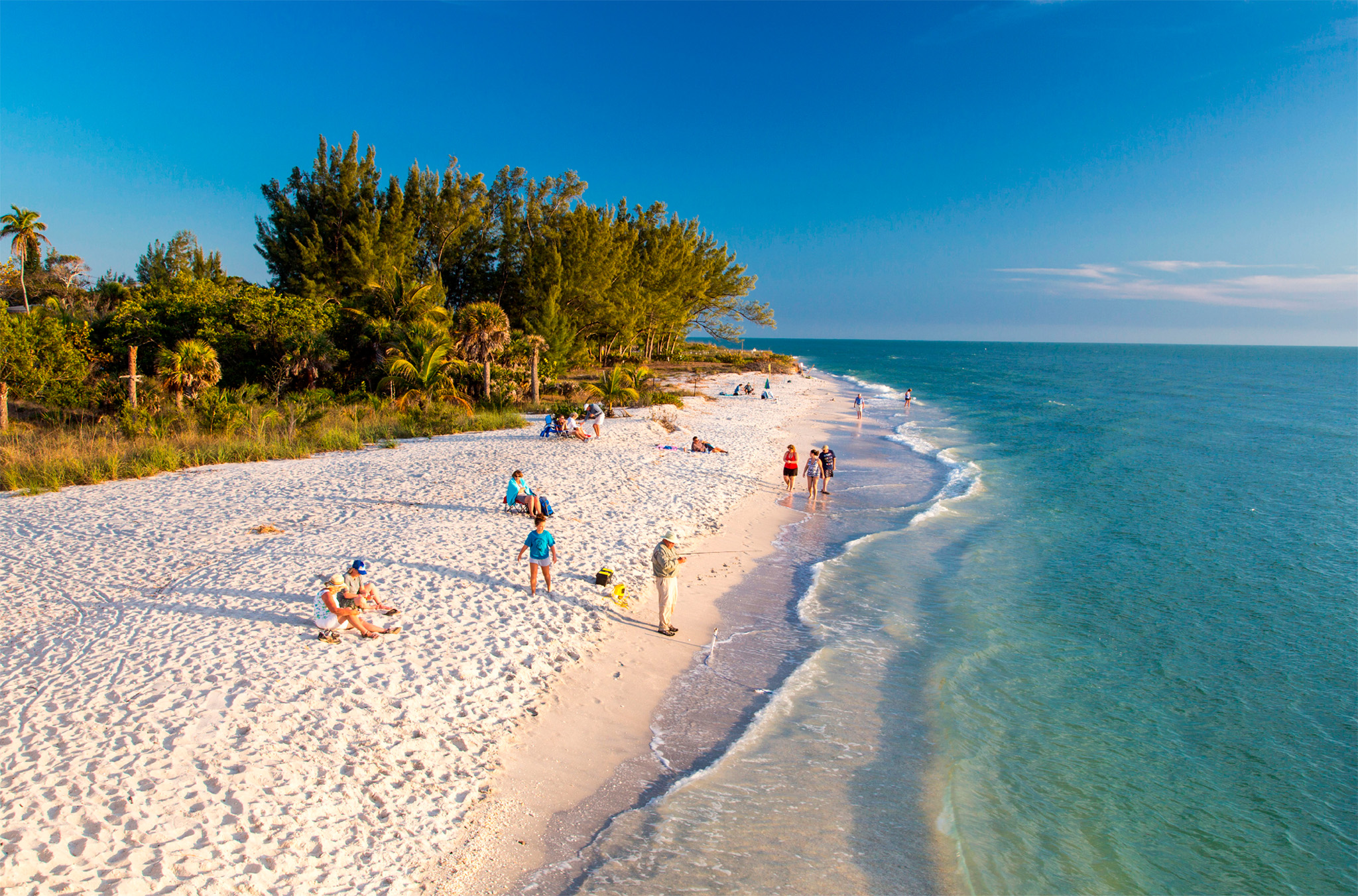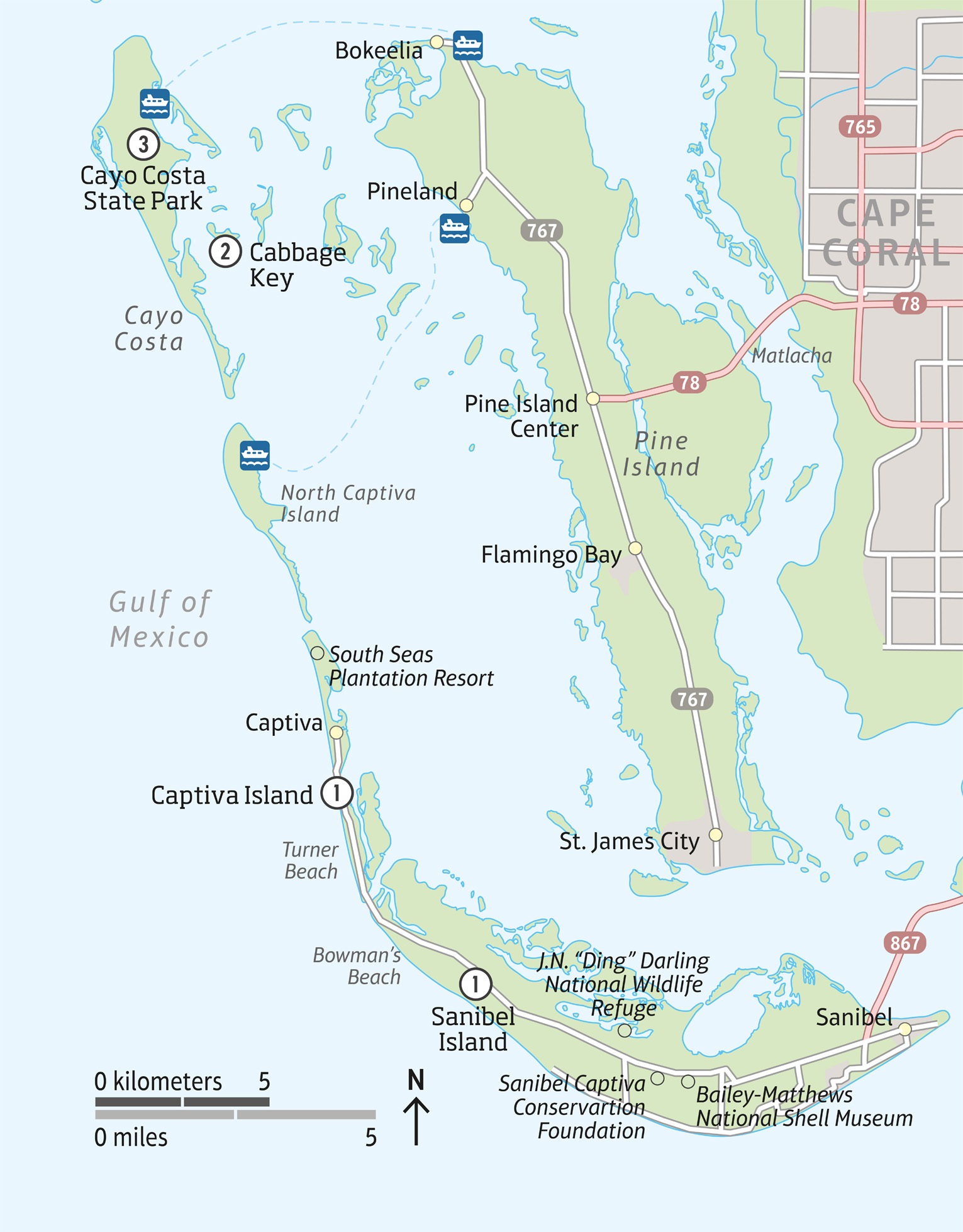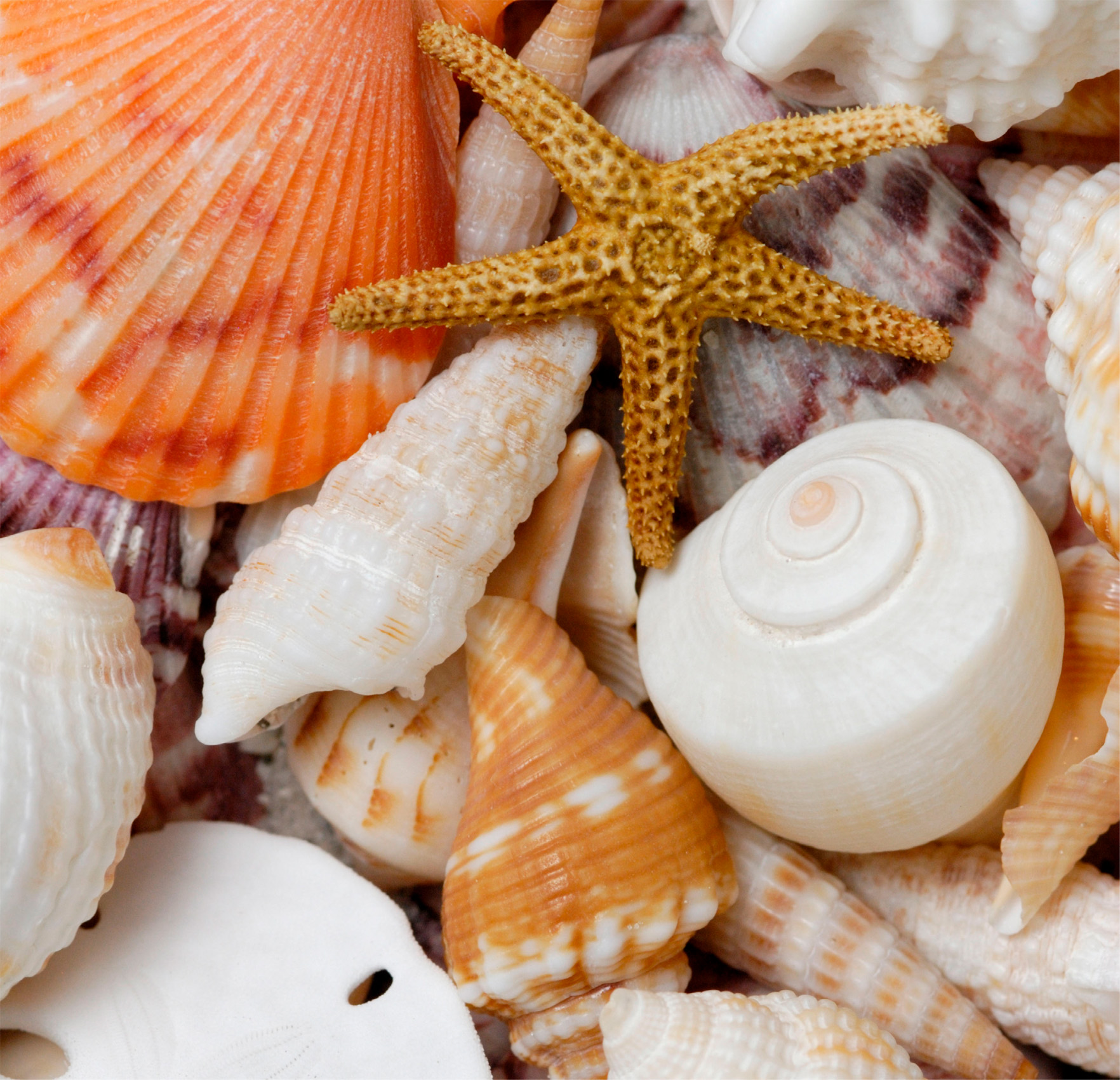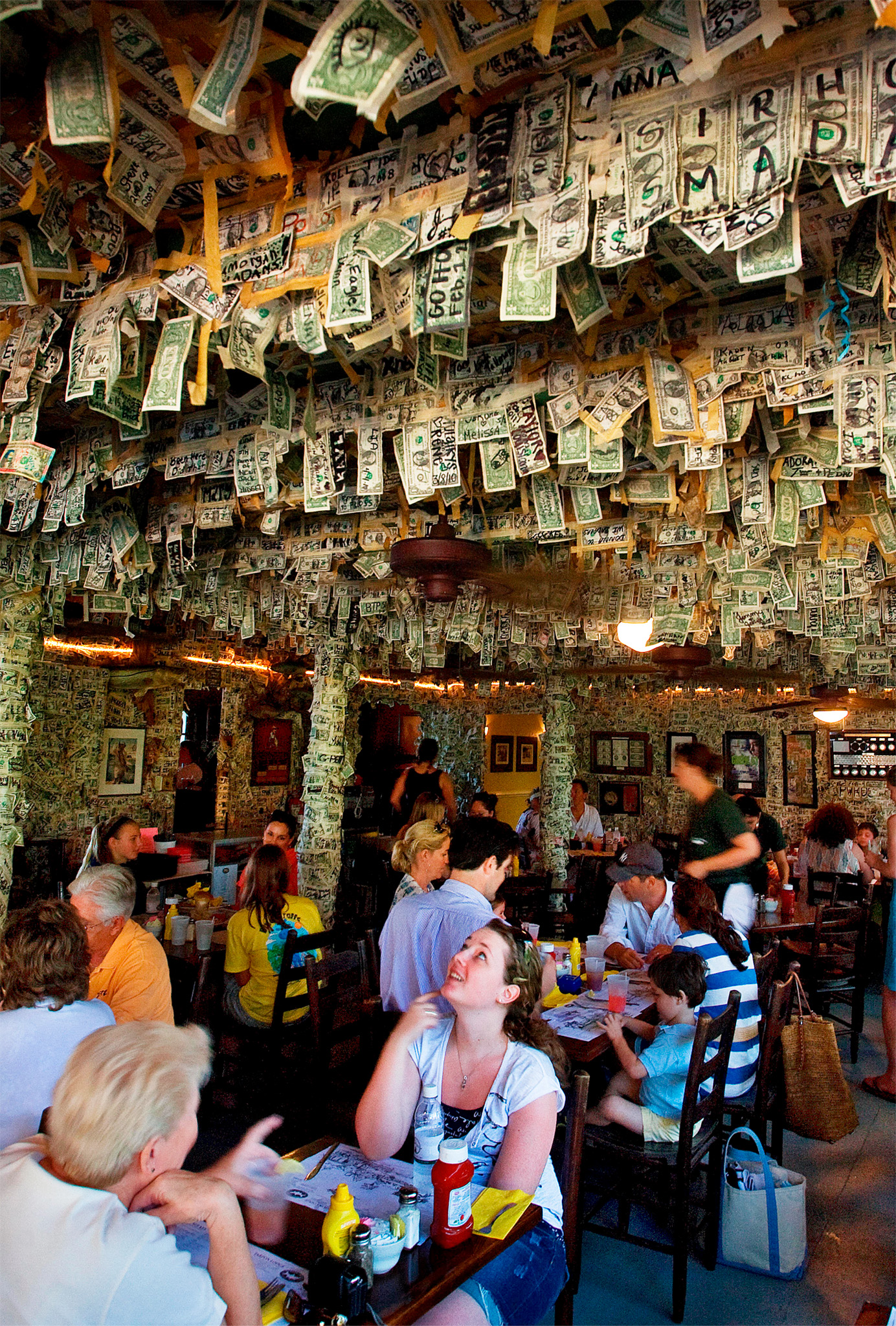The Lee Island Coast offers an irresistible combination of sandy beaches (famous for their shells), exotic wildlife, lush vegetation, and stupendous sunsets. Most visitors head for the chic resorts of Sanibel and Captiva islands, but the remote beauty of less developed islands is equally appealing.

t Turquoise waters and a white sand beach on Sanibel Island
Experience The Gulf Coast

n Double-tap image to read the labels
Within easy reach, Sanibel and Captiva have a laid-back, Caribbean air, and are famous for their shells. Most visitors soon get drawn into the shell-collecting culture, which has given rise to the expressions “Sanibel Stoop” and “Captiva Crouch” for the posture adopted by avid shell hunters.
Two areas of Sanibel are protected as preserves. The Sanibel Captiva Conservation Foundation oversees the protection of a chunk of Sanibel’s interior wetland, with 4 miles (6 km) of tranquil boardwalk trails nearby. An observation tower provides a perfect vantage point. Most of Sanibel’s beaches with public access are along Gulf Drive, the best being Turner and Bowman’s beaches.
Captiva is less developed than Sanibel, but you’ll still find the odd resort, including the South Seas Plantation Resort, with its busy marina – a starting point for boat trips to Cayo Costa.
Another site well worth visiting is the Bailey-Matthews National Shell Museum. The centerpiece Great Hall of Shells includes displays grouped according to habitat, from the Everglades to barrier islands. It claims to have a third of the world’s 10,000 shell varieties.
J.N. “Ding” Darling National Wildlife Refuge occupies two-thirds of Sanibel. Resident wildlife, including raccoons, alligators, and birds such as bald eagles, are surprisingly easy to spot. The popular 5-mile (8-km) “Wildlife Drive” can be covered by bike or by car, and there are trolley tours, too. Canoes, fishing boats, and bikes can be rented.
" '
Sanibel Captiva Conservation Foundation
⌂ Mile Marker 1, Sanibel-Captiva Rd # May–Nov: Mon–Fri; Dec–Apr: Mon–Sat ∑ sccf.org
"
Bailey-Matthews National Shell Museum
⌂ 3075 Sanibel-Captiva Rd # 10am–5pm daily ∑ shellmuseum.org
" '
J.N. “Ding” Darling National Wildlife Refuge
⌂ 1 Wildlife Dr # Times vary, check website ∑ fws.gov/dingdarling

Insider Tip
Pine Island
This island, fringed with mangrove rather than beaches, provides a useful access point to nearby islands. Arrange any boat trips at the marina in Bokeelia, but allow time to enjoy the range of fishing piers.
Experience The Gulf Coast
Shells and Shelling

The beaches of Sanibel and Captiva are among the best in the US for shelling. There is no offshore reef to smash the shells, and the warm, shallow waters have a flat bed, which also encourages growth. Live shelling is subject to severe restrictions, so collect only empty shells. Go early, and search where the surf breaks. Shelling is best in winter or just after a storm.
This island was chosen by the novelist Mary Roberts Rinehart for her home in 1938. Her house, built in the shade of two 18th-century Cuban laurel trees, is now the Cabbage Key Inn. This is best known for its restaurant, which is decorated with around 30,000 autographed one-dollar bills. The first bill was left by a fisherman anxious to make sure he had funds to buy drinks on his next visit. When he returned, he had money to spare and left the bill where it was. Other visitors then took up the idea.
A 40-ft (12-m) water tower nearby provides a lovely view of the small island, and there is also a nature trail. Tropic Star from Pine Island, and Captiva Cruises from Captiva Island run the most regular trips to the Cabbage Key.

t Dollar bills lining the walls and ceiling of Cabbage Key Inn
Cayo Costa Island is one of the state’s most unspoiled barrier islands. Much of it is planted with non-native Australian pine and Brazilian pepper trees. These were originally imported during the 1950s for their shade and wood, but are now gradually being cleared to let domestic species take over. There are miles of dune-backed beach and several mangrove swamps. Inland, there is a mix of pine flatwoods, grassy areas, and hammocks. The island offers plenty of bird-watching opportunities and excellent shelling, especially in winter. Boat trips take visitors to Cayo Costa all year round, and a trolley links the bayside dock to the gulf side.
